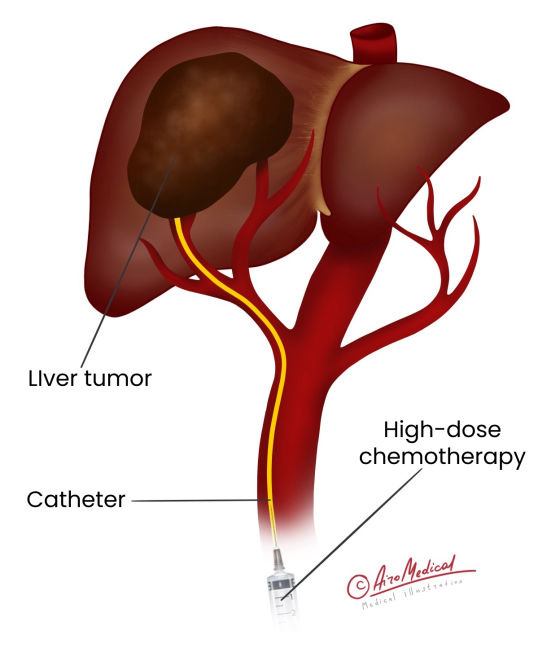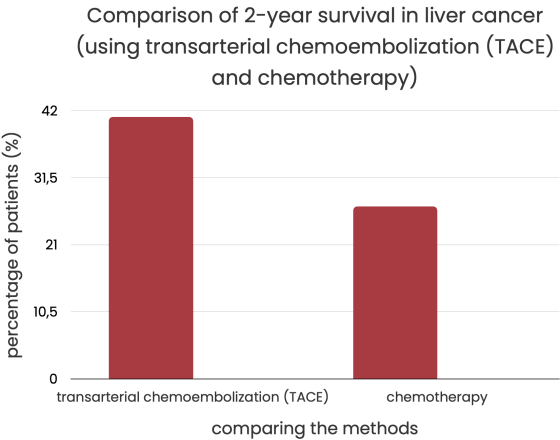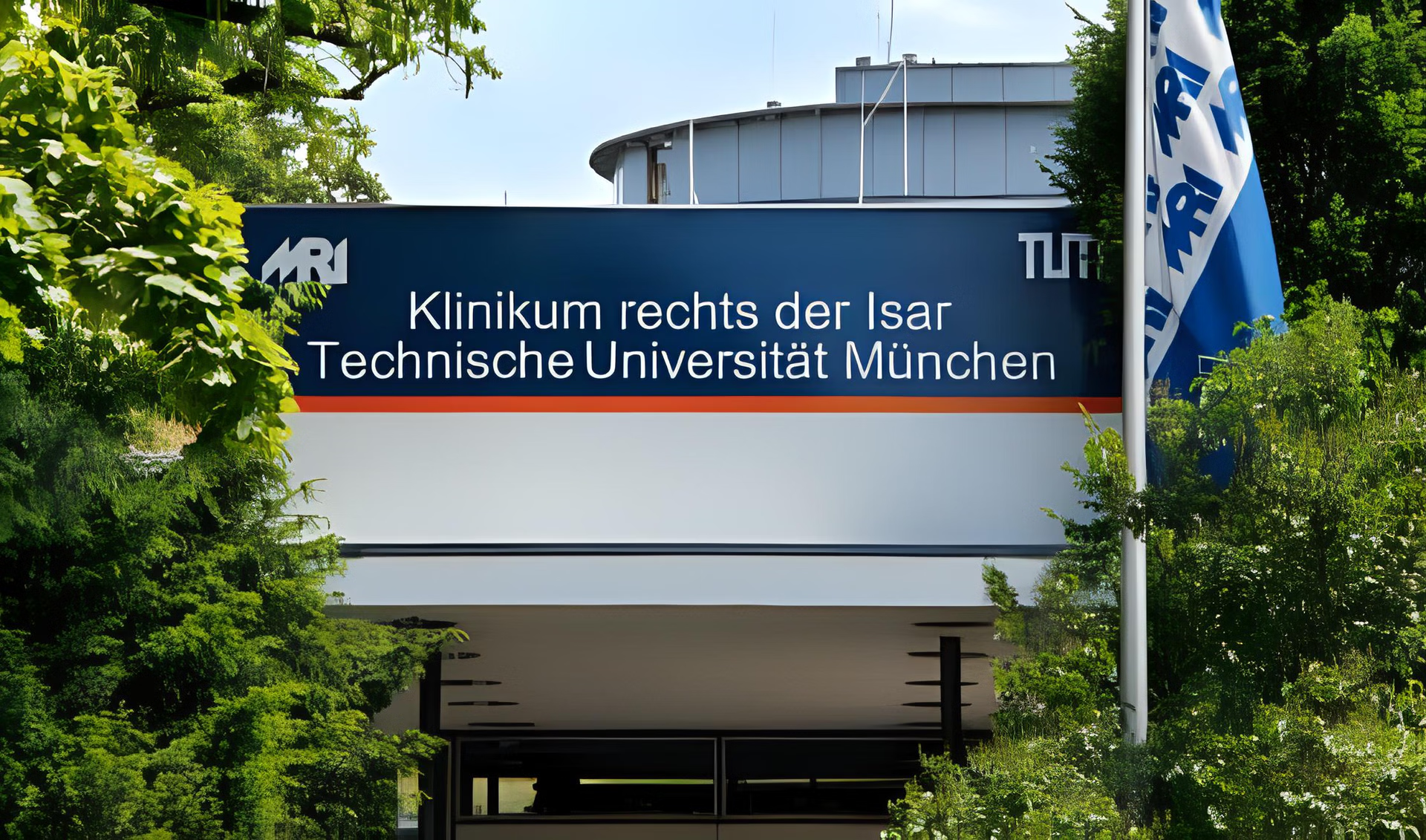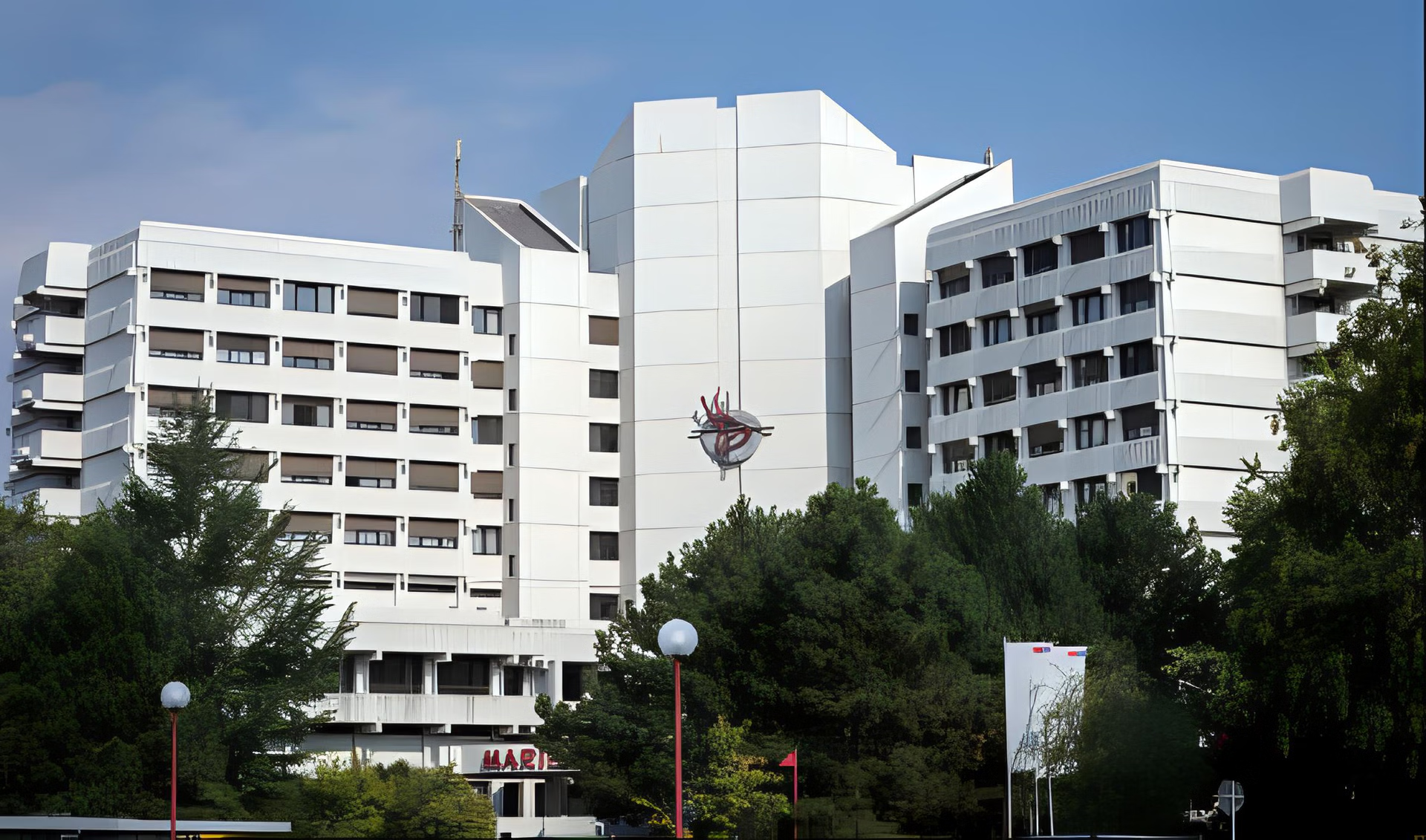Transarterial Chemoembolization for Liver Cancer Treatment

Most TACEs require about 90 minutes.
About 70% of the patients will have their liver problems get better.
TACE therapy can be repeated in 1-2 months after the first procedure.
TACE can halt tumors from expanding or make them smaller in about two-thirds of cases.
 What is transarterial chemoembolization (TACE)?
What is transarterial chemoembolization (TACE)?
It is a way to treat cancer, most often of the liver. TACE chemo combines the local delivery of chemotherapy with a process called embolization. A minimally invasive radiology procedure does not require open surgery and is usually done by an interventional radiologist.
In TACE, anti-cancer drugs are put right into the blood vessel that feeds a tumor. Also, a synthetic substance called an embolic agent is put into the blood vessels that bring blood to cancer. What does embolization mean? The answer is simple – a block in the blood vessel.
Because of this, less food and oxygen can get to cancer cells through the liver’s veins and arteries. It keeps the chemotherapy inside the tumor and stops blood from going to it. TACE causes cancer cells to die, slowing or stopping tumor growth. At the same time, remain liver tissue that is still healthy.
 How it works
How it works
The transcatheter arterial chemoembolization procedure does two things to fight liver cancer. First, it puts a lot of chemotherapy, or drugs that kill cancer cells, directly into the tumor without affecting the whole body. Second, the procedure stops the blood flow to the neoplasm. It keeps the anti-cancer drugs at the site and prevents the tumor from getting the oxygen and "food" it needs to grow. 
To imagine what chemotherapy embolization is and how effective it is, keep in mind the fact. The liver is different from other organs because it gets blood from the hepatic artery and a large vein (the liver blood vessel called the portal vein). About 75% of the liver's blood comes from the portal vein, and only 25% comes from the hepatic artery in a healthy liver. But when a tumor develops, nearly all the blood (95%) it needs comes only from this way. There are the features of liver vasculature.
When chemotherapy drugs are injected into the hepatic artery, they go straight to the tumor and spare most of the liver's healthy tissue. Then, blood can't get to the tumor when the embolized artery is blocked. However, blood can still get through the portal vein of the liver. So, the anti-cancer drugs stay in contact with the tumor longer and at a higher concentration.
TACE treatment is often performed for liver cancer that does not spread (primary). TACE can also treat a secondary (metastatic) tumor that has started from other body parts and has spread to the liver. Chemo and embolization therapy for liver cancer can be used as a stand-alone treatment. Also, it is combined with surgery, ablation, chemo, or radiotherapy to improve efficiency.
 What about details?
What about details?
In common, anti-cancer drugs are used in chemotherapy to kill cancer cells. But systemic one has a lot of side effects in various organs. On the other hand, the liver chemoembolization procedure is a way to directly treat a particular area without affecting the whole body.
When used locally, chemotherapy drugs are given in higher doses than when they are put into the body as a whole.
The procedure of liver cancer embolization has such stages:
- A doctor used visualization before TACE to clarify the liver vascular anatomy and the most accurate tumor location. The treatment is done in the interventional radiology department while the patient is under local anesthesia. It takes about two hours.
- Due to the liver artery catheterization, a long flexible catheter is put into the femoral artery through a small cut in the groin.
- The catheter is then moved along the artery until it reaches the hepatic artery, which brings blood to the liver.
- Next, the doctor injects a special dye (a contrast substance) into the blood to help guide the images and show where the blood vessels are. The contrast makes it possible to see the blood vessels that bring blood to the tumor and help to perform safe hepatic arterial embolization.
- So, chemotherapy and microspheres are put into the area of the tumor. The microspheres block the blood vessels, and the chemotherapy can be released slowly. By stopping blood flow through the hepatic arteries due to embolization, chemotherapeutic agents can work for weeks.
- After the embolization of the hepatic artery procedure, the doctor removes the catheter and wraps the groin with a pressure bandage. Thanks to local exposure, high concentrations and doses of chemotherapy can kill cancer cells as effectively as possible.
- An after-treatment CT or MRI will be performed to control the successful liver chemoembolization procedure.
 Who can use liver tumor embolization? Indications
Who can use liver tumor embolization? Indications
The American Association for the Study of Liver Diseases (AASLD) creates evidence-based recommendations and practice guidances, including the criteria for TACE liver cancer treatment.
Patients met the AASLD criteria for TACE if they had the following:
- No surgery to cure cancer,
- Single hepatocellular carcinoma with a tumor larger than 3 cm, or multiple hepatocellular carcinomas,
- No vasculature invasion,
- No disease outside of the liver.
Also, TACE is used for metastasis of other cancer that spread to the liver from:
- Colon,
- Breast,
- Pancreas,
- Eyes.
Tumors like neuroendocrine, vascular, sarcomas, and melanoma that metastasize to the liver can be cured by embolization treatment.
Where to go to treat liver cancer by TACE procedure?
 Advantages and risks of the TACE treatment for liver cancer
Advantages and risks of the TACE treatment for liver cancer
TACE is a minimally invasive treatment. Liver embolization improves survival rates without adversely affecting the body. However, the procedure is typically performed in some instances:
- if a doctor can not do an operation,
- if an oncologist occurs metastatic liver tumors,
- if conventional systemic chemotherapy has not produced a response.
Arterial embolization of liver cancer provides some benefits, including the following:
- Improving the life quality - more comfort, fewer side effects, conserving liver function, and prolonged life in severe cases;
- Receiving the better result, a significant decrease in tumor growth/drop of the tumor until the complete disappearance;
- Time-saving because the patient needs a shorter period of hospitalization; all procedure requires about 90 minutes;
- Minimally hurting due to no surgical incision is required (minimally-invasive method). The doctor makes the liver artery catheterization only after local anesthesia.
- Less loading on the body and because of the local exposure to the chemo drugs to faster recovery after liver embolization;
- Combining with other treatments like tumor ablation, chemotherapy, or radiation, to achieve optimal tumor management.
Concerning the risks and TACE side effects, these are:
- Infection. Any procedure that breaks the skin opens the body up to the risk of getting an infection. Less than one in 1,000 people will need antibiotic treatment.
- Blood vessel damage. Putting a catheter into a blood vessel is always risky, and blood vessel damage and bleeding are rare side effects of liver embolization.
- Allergic reaction because of the contrast usage. To prevent chemoembolization side effects, the radiology technologist will find out if you have any allergies.
- Kidney damage in the case of previous kidney diseases like diabetic nephropathy. To avoid the risk of kidney failure checking kidney function is essential.
- Chemo side effects like sickness, hair loss, a drop in white blood cells, a decrease in platelets, and anemia. TACE stores most of the chemotherapy drugs in the liver, so these reactions are usually mild.
About one out of every 20 TACE procedures has a complication in the severe form. The most serious problems are caused by infection or damage to the liver.
Who helps in TACE performed?
 Results and statistics
Results and statistics
Liver cancer is the third most common type of cancer that kills people and one of the most common cancer in the world. When liver cancer is finally found, many people are in the middle or late stages of the disease. TACE is the only option in these cases, but surgery is not.

After TACE, hepatic metastases got smaller or didn't change for 94% of the people who had them.
The American Association for the Study of Liver Diseases (AASLD) says that TACE is a treatment for the middle and late stages. In the studies, transarterial chemoembolization was compared to traditional therapy (e.g., chemotherapy). These studies proved that TACE is the best way to improve survival. Only 27% of people were still alive after two years when systemic chemotherapy was used instead of TACE.
 TACE with AiroMedical: How can we help?
TACE with AiroMedical: How can we help?
Choosing a specialized clinic from a few of the best hospitals is essential. With the help of AiroMedical, you can sign up for the program, including the embolization of the liver artery. Our experts will help you decide which clinic is best. If you work with us, you will:
- Treatment at the best TACE-focused clinic.
- Less time spent waiting for treatment to start and the ability to pick particular dates.
- Help with buying and delivering all of the needed medicines.
- Putting together more diagnostic and treatment procedures.
- Talk to the staff and people in charge at the clinic.
- Medical care and a ride from the airport to and from the clinic.
We choose which doctors and clinics to work with based on annual qualification reports. The most important if you are looking for in a doctor is how many successful operations or procedures they have done. We also search for the doctors' years of experience. Their reputation in the medical community is an important criterion to choose, as well as how much they specialize in a specific field.
Put your request on our website. Our medical consultant will answer the questions you have about TACE.
In what countries will TACE do the best?
References:
- About ScienceDirect: Optimal timing of combining sorafenib with trans-arterial chemoembolization in patients with hepatocellular carcinoma: A meta-analysis
- Cancer Connect: TACE Treatment Improves Outcomes in Liver Cancer
- Karger: Patient Selection for Transarterial Chemoembolization in Hepatocellular Carcinoma: Importance of Benefit/Risk Assessment
- Springer Nature: Survival benefit of transarterial chemoembolization in patients with metastatic hepatocellular carcinoma: a single center experience
- Cancer Research UK: Trans arterial chemoembolization (TACE)











